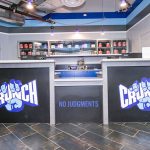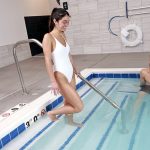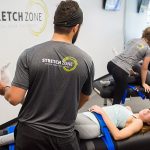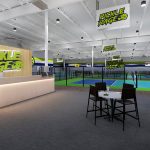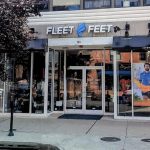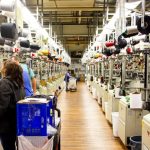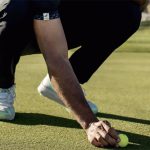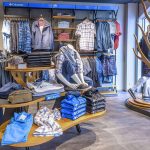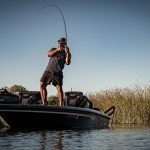During Reebok Investor Day on June 17th, Reebok management revealed many new initiatives and products slated for debut over the next few months. Jay Margolis, President and COO began the festivities by noting that 2004 is “about the quality of the brand, rather than about elevating the top line.” Margolis laid out the key initiatives for Reebok in 2004: taking back share in Womens; focusing on new technologies; creating differentiation across retailers; and “Activating assets” by getting more out of paid endorsers.
Much time during the presentations were spent on touting the results of Reeboks move into the musician endorsement business with signature products from Jay-Z, 50 Cent, and Pharrell Williams. While the volume from these products is necessarily limited, Reebok feels that the connection with these musicians has enhanced their image with their core 12-18 year old male consumer. Noting that “we are in a real estate game” at retail, Margolis stated that “we think our competitors are making a mistake” by ignoring the connections between music, fashion, and sports.
Dennis Baldwin, Chief Marketing Officer, explained the Reebok mission, “to be a leader in sports”. Keys to this initiative are: Creating leadership in technology, capitalizing on athletic lifestyle, and building sports performance authenticity through their licensed relationships. Baldwin noted that the key categories for growth in 2004 are Basketball, Running, Classics and Branded Apparel. While admitting that Reebok only has a 3% share in Running at the present time, Baldwin stated that the potential volume in running was $450 million.
Baldwin explained the various customer segments Reebok will address in 2004, including the Metro and Urban consumer. He also noted that there is now 80% “unaided brand awareness” for the Vector.
Que Gaskins, head of Rbk marketing, stated that Rbk “is the sharp edge of the Reebok brand representing the fusion of sports, music and technology.” The Rbk brand represents “the heat for the Reebok brand”. He described in detail the initiatives around S. Carter, G-Unit and Ice Cream sub brands. Rbk is now 15% of Reeboks business, with Classics contributing 40%.
Baldwin then described how Reebok will address the industrys move toward more technological footwear. Reebok will make an “intense effort” to deliver new technologies to the market.
Baldwin stated the key technological initiative for 2005 will be the revival of The Pump. First introduced in 1989, Reebok sold more than 24 million pairs of the Pump before abandoning the technology in 1995. Noting that they have had success with bringing back retro Pump styles, Reebok now plans to re-introduce it in spring of 2005 with the NBA All Star game and then introduce a running version in April 2005. Finally they have developed a new version of the Pump, called Pump 2.0, which is self-inflating.
Asked why Reebok abandoned the Pump product, chairman and CEO Paul Fireman said. “We messed it up. We allowed every product manager to make a Pump shoe. We lost control.” Fireman went on to say that the “Pump is critical to the success of Reebok.”
Ed Luscier, Creative Director, sees Technology as key to connecting with sports. He noted that more technological shoes tend to garner high prices and better margins for both Reebok and its retailers. Remarking that “Reebok has a history of innovation”, Luscier stated that Reebok would introduce three new technologies for 2005. DMX Micro and DMX Shear are new iterations of the 10+ year old DMX technology. They also have developed a new football cleat that enters and exits the ground in more efficient manner.
David Baxter, president of On-Field and Branded Apparel, stated that the licensed business for Reebok breaks down to 75% fan and 25% fashion. Noting that the fashion business has slowed, Baxter feels they have a franchise with the fan. “The fan shop and sporting goods business continues to grow.”
Reebok will now have all of the teams in the NBA at the beginning of the season and will be the exclusive replica supplier for the NBA. Fireman stated that “Nike has dumped a lot of Swingman product into the market which will cause a indigestible amount for 6 months to a year.”
Bob Munroe, SVP/GM of Reebok North America, observed that Reeboks business with Athletic Specialty and “directional fashion stores” has “doubled in the last 4 years” and is now nearly two-thirds of their overall business. He also mentioned that Foot Locker is “still finalizing” plans for Footactions Back to School orders, but that they expected to see growth in the Footaction stores over the near term.
During the Q&A, Fireman was pressed on the future order situation at Foot Locker. While admitting that the Nike business was growing at Foot Locker, Fireman said that Foot Locker was “spending significantly more with us. I dont know how is missing in that equation, but I know Foot Locker is going to market with Reebok in a very prosperous way.”
Fireman seemed to question the health of the Nike business, noting that the brand was taking “Air Force One, under a different name, down to Kohls, Penneys and Sears. It doesnt make sense to me. Why are they bringing their franchise down to a lower market? There is more to this thing than you are hearing”.
Fireman ended the presentation by saying. “The only missing link for Reebok is presence at retail.”
>>> Sometimes its just best to let others have the last word…

